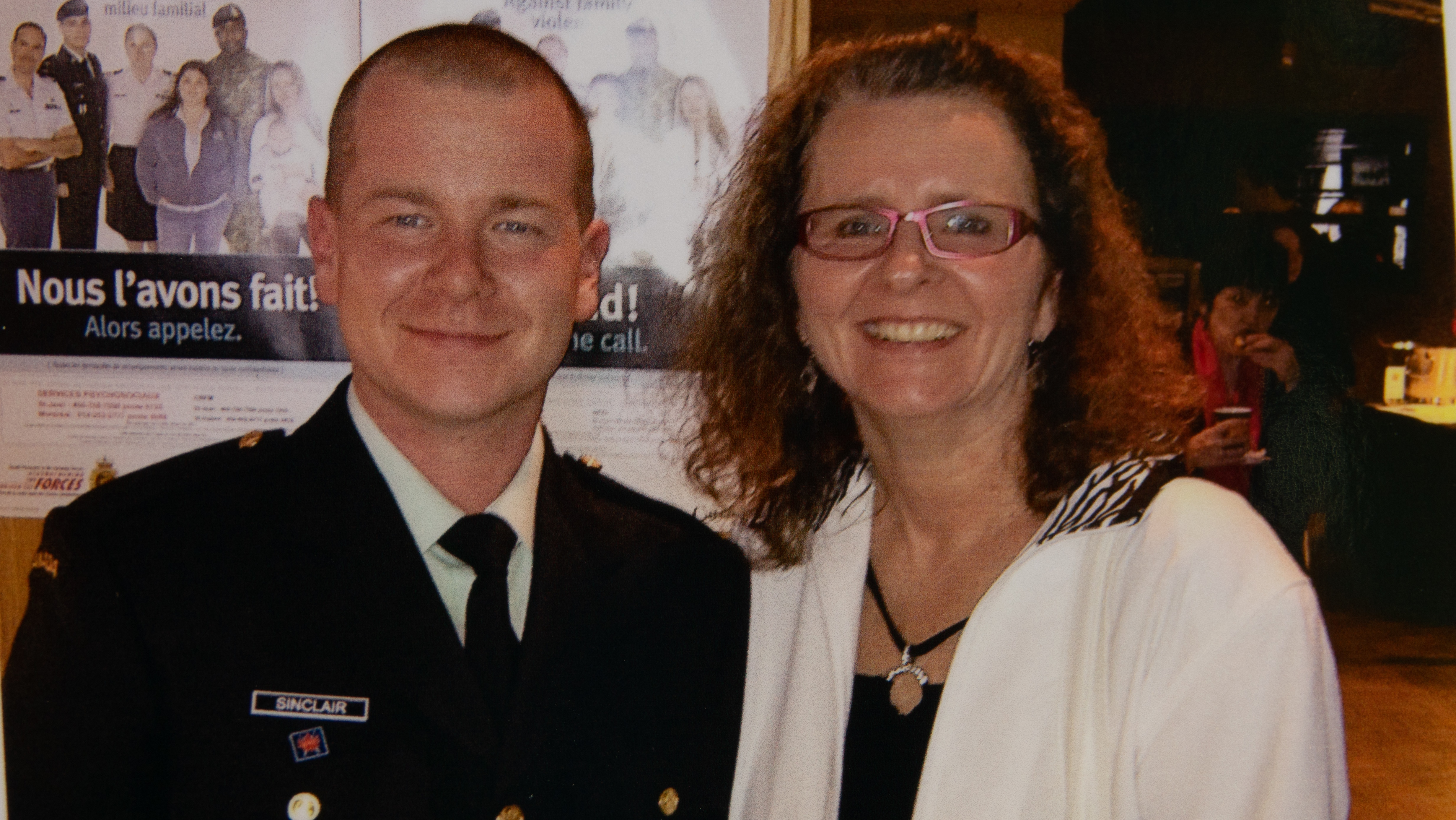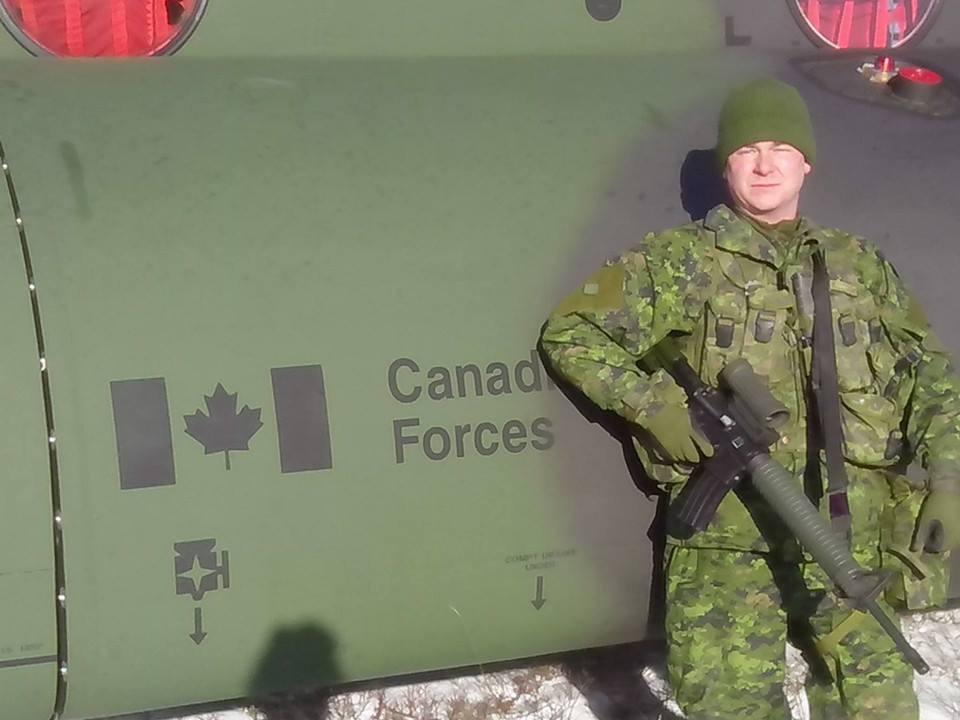July 12, 2018
The death of a military mechanic killed while working alone inside a Coyote armoured vehicle at CFB Petawawa could have been prevented if the Canadian Armed Forces had heeded warnings following a similar incident years earlier, the man who oversaw a board of inquiry into the death says.
CBC has obtained a report revealing details about the death of Craftsman Kyle Sinclair in 2014 — details that raise questions about why the military ignored calls to modify the driver's seat to eliminate what had been flagged as a "threat" inside this particular type of vehicle after another soldier died in 1999.
Retired major Robert Parent, who presided over the military's board of inquiry (BOI) into the 2014 incident, told CBC Sinclair's death was "needless."
"A good, young man had passed away in fairly awful circumstances, and it didn't need to happen," Parent said. "There was no reason he had to be working in this kind of environment where there was such a deadly hazard."
The army killed my son. There's no other way of saying it.
By September 2016, the army removed the steel-plated seats from all Coyotes belonging to the Canadian Forces, with the exception of five currently deployed as part of the NATO mission in Latvia.
Sinclair's mother, Anna Loveman, still struggles with losing the son she called the heart of her family.
"The army killed my son," she said. "There's no other way of saying it."

Sinclair loved working with his hands.
He owned a contracting company in Oshawa, Ont., before joining the army at 25. He told his family he wanted to learn new skills and a job with a reliable pension. There were openings for vehicle technicians.
His mother remembers her son calling home, filled with excitement.
"He just loved the army," Loveman said. "He said it was what he was meant to be."

On the afternoon of Friday, Nov. 21, 2014, Sinclair was working alone at a maintenance facility at CFB Petawawa, about 165 km northwest of Ottawa. A number of his superiors were away at a hockey tournament at CFB Borden, about 400 km away. The pace of work was "extremely slow," according to the BOI report.
With no supervision or training related to the task, Sinclair had been ordered to fix a seatbelt inside one of the Coyotes so it could be back in service by Monday. He began the work around 12:30 p.m. ET, according to the report.
Sinclair was working behind the driver's seat, located under a hatch at the front of the Coyote, when it's believed he leaned forward and pulled a lever that raised the pneumatic seat in order to clean under it, without being aware of the hazards the seat posed.
The seat shot up before Sinclair had time to move out of the way, pinning him by the neck against the hull of the vehicle. There was no one around to help, and no way for him to escape, according to the report. He was found pinned inside the vehicle shortly before 1:15 p.m.
"Kyle was blue when they found him," Loveman said.

Paramedics attempted to resuscitate Sinclair. He was transported first by ambulance to hospital in Pembroke, Ont., then by helicopter to the Ottawa Hospital's Civic campus, where he was declared brain dead.
Just before midnight, six hours after Sinclair had arrived at the hospital, his family made the excruciating decision to take him off life support. He was 27.
"You're almost numb," Loveman recalled. "You just don’t really think that this is really happening. Then when you see the straight line, you go, 'Oh, OK, it did.'"
Her son's death shattered the family.
"It was just overwhelming," Loveman said. "Kyle was the heart of the family. He was our protector."

For more than six weeks, Loveman sat through the inquiry that followed, listening to every detail of her son's death. It wasn't easy to hear.
Parent described the seat as a "reverse guillotine." But unlike with a guillotine, death didn't come instantly.
"The ballistic metal of the seat crushed his windpipe, and he was asphyxiated," Parent said. "Being asphyxiated in that kind of manner would have taken some time."
Then the inquiry learned the military had first become aware of the dangerous seats 15 years before Sinclair died.
Loveman said there was an audible gasp in the room.
"We were all shocked," she said. "What do you mean, this happened before?"

In 1999, three years after the Canadian Forces acquired the Coyote armoured vehicles, another soldier died in a remarkably similar incident.
Trooper Kevin Zufelt, 30, was working inside a Coyote during a training exercise at CFB Wainwright in Alberta when he, too, became pinned by the pneumatic seat. He was found "kneeling behind the driver's seat facing forward with his neck compressed and trapped between the seat and the hull of the vehicle," according to a report prepared by a board of inquiry looking into his death.
The inquiry led to several recommendations, including eliminating the seat's "threat" of a severe pinch factor.
That meant removing material from the steel-plated seat back to increase the space left between the seat back and the vehicle's hull when the seat was raised.
The military chain of command rejected the idea.
According to the report, the commander of 1 Canadian Mechanized Brigade Group (1 CMBG) stated the alteration would "compromise the ballistic protection" the seat offers the driver during a mission. In other words, he feared removing any plating would increase the risk of soldiers being struck by bullets or shrapnel.
Others, including the commander of the Canadian Army at the time, agreed.
The commander of 1 CMBG at the time of Zufelt's death and during the investigation was Andrew Leslie.
Leslie, now a Liberal MP, declined CBC's requests for an interview.

Parent said Sinclair's death could have been prevented if the recommendations stemming from the inquiry into Zufelt's death had been heeded.
He said he's heard first-hand about other close calls over the years.
The simple fact is, we didn't need to have that seat.
"Pretty much every NCO (non-commissioned officer), driver or individual with experience with the Coyote vehicle had some story of a close call. No deaths. But people being pinned, people being startled, scared."
He says there needs to be greater accountability now for what happened.
"The simple fact is, we didn't need to have that seat," Parent said. "Every training objective that we have internally to the army within Canada could have been met without that seat in place."

The army calls Sinclair's death a "tragedy."
"No one, despite our safety culture, would have expected another death in 2014," said Col. Jason Adair, commander of 2 Canadian Mechanized Brigade Group in Petawawa.
After Zufelt's death in 1999, the army maintained the anti-ballistic seats to protect soldiers and allow them to train with the same equipment they would use during a mission, Adair said. The Coyotes were used throughout the Afghanistan mission.
"Training in the seat you're going to operate in is extremely important," Adair said.
Adair said while the seats weren't altered at the time, the army did take other precautions following Zufelt's death.
Personnel received further training about the seats; a special caution was inserted into the vehicle's operator and maintenance manuals, and included with orders; a guard was installed over the seat's on-off switch in some vehicles; and stickers were placed inside the vehicles, warning that the seat control must not be activated from behind.

In Sinclair's case, those precautions weren't enough. The inquiry found a number of "weaknesses" that contributed to his death, including:
- Sinclair activated the lever to raise the seat without knowing the dangers.
- He was not trained to perform the assigned task.
- Sinclair was never provided safety training.
- Warning labels were not stitched onto the seat cushion inside the Coyote.
- There was no guard over the seat switch in the Coyote Sinclair was working on.
- Sinclair was working in isolation.
Col. Adair said the army has learned from Sinclair's death and is constantly promoting safety — to a point.
"While we're in the business of managing risk, it's impossible for us to reduce that risk to zero," he said. "These are war-fighting vehicles. That's why we do so much training. They are inherently dangerous."
Nevertheless, by September 2016, the dangerous seats were mostly gone, and the Canadian military's fleet of 85 Coyotes is expected to be taken out of service entirely by 2021.
See the inside of the vehicle and hear retired major Robert Parent describe how the accident happened in the video below:
Loveman believes more can be done.
For example, the BOI recommended installing a safety specialist inside every army maintenance facility. The military does not support this recommendation, saying it already has a safety system in place.
Loveman has written directly to Canada's top general, Jonathan Vance, asking for further safety improvements so her son's death won't have been in vain.
Gen. Vance's office declined to comment on this story.
Loveman still shows up to every military event she's invited to with the silver cross she received from the military in recognition of her son's sacrifice pinned to her chest.
"I'm making sure my son is not forgotten," she said. "I'm going to make sure change happens."

